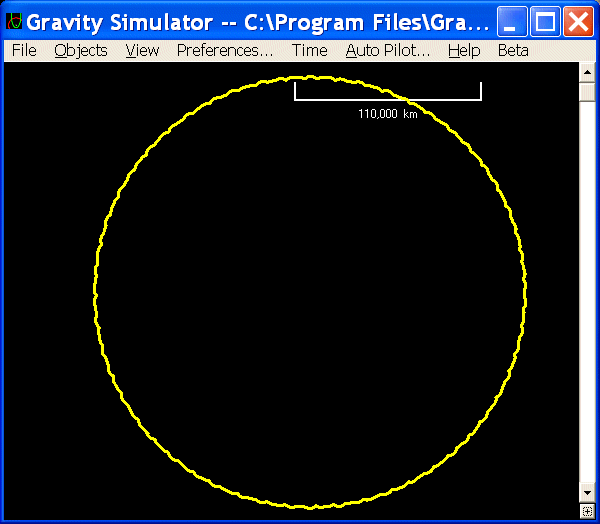Yes, the Solar System barycentre (SSB) is usually outside of the Sun. That is, over the long term, the mean distance from the centre of the Sun to the SSB is greater than the Sun's radius of 695,700 km. (That's the IAU's nominal solar radius).
As ProfRob commented, we don't really know the exact location of the SSB, since we can only calculate it based on the known bodies in the Solar System, and we simply don't know the locations, trajectories, and masses of all the bodies in the outermost reaches of the system. So we use a nominal SSB with a location consistent with the motions of the known bodies, and that location is updated when new information becomes available.
The Jet Propulsion Laboratory (JPL) have been producing ephemerides since the 1960s. Their JPL Development Ephemeris series is not only used by NASA, it's also been the basis of the Astronomical Almanac since 1981. Their ephemeris data covering 9999 BC to 9999 AD is freely available via the Horizons system. They recently updated their SSB info:
April 12, 2021
Due to the addition of KBO mass in DE440/441, the SSB has shifted about 100 km
A few months ago, I added a link to an interactive 3D version of the Sun-SSB diagram to this answer. I used that Python code as the basis of a new script that creates 2D plots of the radial distance of the centre of the Sun from the SSB for any timespan in the Horizons database. It also integrates the mean radial distance over the selected timespan. Here's an example plot, covering 1700 AD to 2200 AD, with a timestep of 1 calendar year, which yields a mean distance of 829,224 km. A timestep of 1 calendar month gives a mean distance of 829,185 km. That's comfortably larger than 695,700 km.

The vertical scale is in kilometres, which the plotting library prints in scientific notation, with "1e6" near the top of the axis. The horizontal axis is labelled with Julian day numbers, which are also displayed in scientific notation.
I chose 500 years because it's long enough to include a few orbits of Neptune and it's approximately a whole number of cycles of the 3 outer planets. It's also convenient that it's a whole number of decades. ;)
| Planet |
Cycles |
| Jupiter |
42.15 |
| Saturn |
16.95 |
| Uranus |
5.95 |
| Neptune |
3.03 |
Here's a live version of the plotting script, running on the SageMathCell server. It has various options (including SVG display) which (I hope) are self-explanatory. The start & stop values must be whole year numbers, possibly with an "AD" or "BC" prefix or suffix (this notation is needed for years before 100 AD). The step parameter has various options, see the Horizons docs for details, but briefly "6 Month" steps by 6 calendar months, "100 days" steps by 100 days, and a plain number without any letters divides the timespan into that number of equal steps.
The script caches the last 3 sets of data fetched from Horizons, so if you just modify "cosmetic" options (without changing the timespan or time step) it can reuse the data rather than having to request the identical data again.
The script doesn't use any Sage features, apart from the plotting routines, so you can use the functions that fetch and parse Horizons data in a standard Python environment. (The code that converts Horizons commands to a URL is much more robust than the code I used in the 3D plot).
Here's an SVG corresponding to that Wikipedia diagram: 1945-1995, with 1 year steps. It has a mean distance of 822,369 km.

Outis Nemo mentions in the comments that there's an approximate 179 year cycle in the Sun - SSB distance. ~179 years is a multiple of the synodic periods of the 3 outer planets, relative to Jupiter. 9× Saturn, 13× Uranus, 14×Neptune gives 178.769349, -179.558288, -178.949050 respectively, in Julian years. So approximate alignments of all 4 outer planets repeat with a period of ~179 years.
The most important contribution in this cycle is the Jupiter-Saturn cycle of 178.769349 Julian years, which is approximately 65295.5 days.
I illustrate this cycle in the following polar plot, spanning 1800 years, from AD 300 TO AD 2100, with a 60 day time step (using the Terrestrial Time scale, and the Gregorian calendar). In this plot, the radius gives the Sun-SSB distance (in millions of km), the angle (anticlockwise, from the +X axis) gives the date. The date wraps around with a period of 65295.5 days, so each degree corresponds to ~2 years. Each cycle is plotted in a different colour of the rainbow, starting at red.

Here's a polar plot (using a different rainbow palette) spanning 20 cycles (~3600 years), starting from a Jupiter-Saturn conjuction. The solid circle shows the Sun's radius. The dotted circle (with radius 827,467 km) shows the mean distance.
The same symmetries are evident, but the pattern is definitely getting more complex. The end of the cycle is not a Jupiter-Saturn conjuction, but there is a conjunction a few months earlier, on 3013-Dec-17.









